Hunters grew intrigued when Remington introduced the 360 Buckammer cartridge at 2023’s SHOT Show The new product caught much of the industry off guard.
Given the name, we all assumed it was meant for deer hunting. But we knew little else. Now, the .360 Buckhammer, styled as the “.360 BHMR” and often called, simply, the “Buckhammer,” is gaining more attention every day. Every year as fall takes over, more hunters want to know about the caliber, including information about 360 buckhammer ballistics.
What is the .360 Buckhammer?
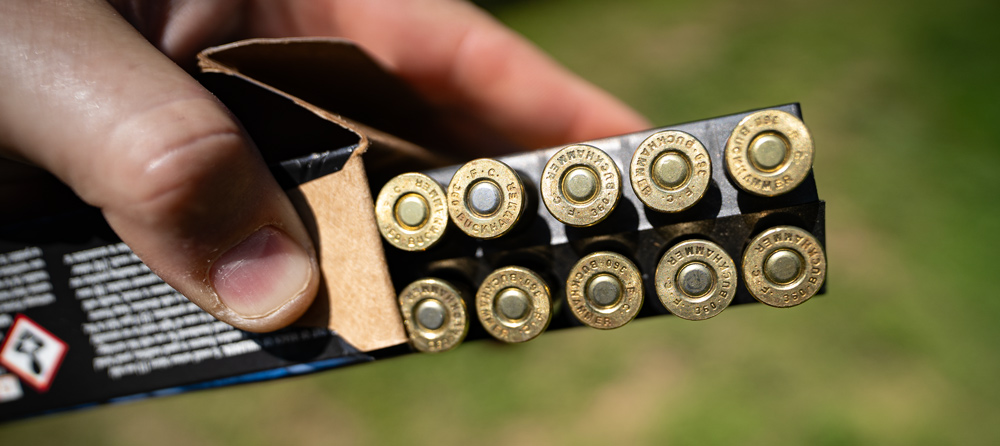
The .360 Buckhammer was made using the .30-30 Winchester case. Essentially, Remington engineers and designers widened the end of the case so instead of being “necked” (with a shoulder or bottle-like frame) it is a straight wall, maintaining a cylindrical shape from back to front.
Federal also offers a Power-Shok line of 360 Buckhammer.
.360 Buckhammer: Ballistics
The .360 Buckhammer was made for midwestern deer hunters, which means it needs strong power but it doesn’t need to be a shoulder-pounding big-game round. It needs decent range, but most hunters in the Midwest will be making shots within 200 yards, so it doesn’t need to be a sniper round; it doesn’t need the 500-yard capability that some hunters in the western United States require.
Currently, we only have the 180-grain and 200-grain options from Remington, but the company has provided basic ballistic information, allowing us to form a starting picture for this cartridge.
Velocity
| Muzzle Velocity (fps) | 100-Yard Velocity | 200-Yard Velocity | |
|---|---|---|---|
| 180-grain Core-Lokt SP (Remington) | 2,400 | 1,949 | 1,558 |
| 200-grain Core-Lokt SP (Remington) | 2,200 | 1,779 | 1,422 |
| 180-grain Power-Shok JSP (Federal) | 2,374 | 1,917 | 1,522 |
| 200-grain Power-Shok JSP (Federal) | 1,197 | 1,777 | 1,421 |
| 220-grain Hammerdown SP (Federal) | 2,000 | 1,723 | 1,476 |
Velocity is not the selling point for .360 Buckmaster, but that doesn’t mean it’s slow. The speed ratings are fairly strong, with muzzle ratings above 2,000 fps for both rounds. They both maintain speeds around 1,500 fps at 200 yards, so there should be plenty of momentum with either of these rounds. One important note about this data – Remington rounds use a 24″ barrel for their testing data. Federal relies on a shorter 20″ barrel.
Energy
| Muzzle Energy (ft-lbs) | 100-Yard Energy | 200-Yard Energy | |
|---|---|---|---|
| 180-grain Core-Lokt SP (Remington) | 2,302 | 1,518 | 970 |
| 200-grain Core-Lokt SP (Remington) | 2,149 | 1,406 | 898 |
| 180-grain Power-Shok JSP (Federal | 2,251 | 1,468 | 926 |
| 200-grain Power-Shok JSP (Federal) | 2,155 | 1,402 | 896 |
| 220-grain Hammerdown SP (Federal) | 1,954 | 1,449 | 1,064 |
These results are somewhat surprising. Many would have expected the heavier projectile (200 grain) to have higher energy than the smaller 18-grain round. However, likely due to faster speeds, the 180-grain product delivers more energy to the target.
The generally-held assumption is that you need roughly 1,000 ft-lbs for effective deer shots, although this is an imperfect way to measure terminal performance. (Energy is part of the equation, not the whole thing.) However, if we use this as our guide, both the 180-grain and 200-grain rounds are very capable to 100 yards, and likely deliver enough force at 150. 200 yards may be pushing the limits, but proper shot placement (which is always critical) will likely drop a healthy buck.
.360 Buckhammer Trajectory
| Drop at 200 yards when zeroed to 100 (Inches) | Drop at 300 yards when zeroed to 100 | |
|---|---|---|
| 180-grain Core-Lokt SP (Remington) | 7.9 inches | 30.4 inches |
| 200-grain Core-Lokt SP (Remington) | 9.7 inches | 36.9 inches |
| 180-grain Power-Shok JSP (Federal) | 8.1 inches | 31.5 inches |
| 200-grain Power-Shok JSP (Federal) | 9.7 inches | 36.9 inches |
| 220-grain Hammerdown SP (Federal) | 10.3 inches | 36.7 inches |
The trajectory performance seems strong as well. Of course, some rounds have straighter trajectories, but most of these are necked cartridges with much lighter bullets and far higher speeds. 300 yards is probably too far for this round, so the drop at this range is unimportant. However, at 200 yards, with a drop of less than a foot, this is certainly a round that can touch a target at this range.
After examining 360 Buckhammer ballistics, it’s clear this is not a long-range sniper round. It should, however, give hunters a decent reach.
.360 Buckhammer Dimensions and Stats
| Released | 2023 |
|---|---|
| Case Type | Straight wall |
| Bullet Diameter | .359 inches |
| Neck Diameter | .3798 inches |
| Base Diameter | .4195 inches |
| Case Length | 1.8 inches |
| Overall Length | 2.5 inches |
| Bullet Weights | 180 - 200 grains |
| Typical Firearm | Lever action |
The cartridge was tailor-made for lever action. Specifically, it’s for deer hunters in midwest states that do not allow necked cartridges but do allow straight-wall rounds. This includes Iowa, Indiana, and Ohio, as well as southern portions of Michigan. With a case length of 1.8 inches, it maintains legality in these regions. (1.8 is the maximum length allowed for most of these regions.)
Currently, only two ammunition manufacturers have an available product in the .360 Buckhammer. Of course, these manufacturers are Remington and Federal (both fall under the same corporate ownership.)

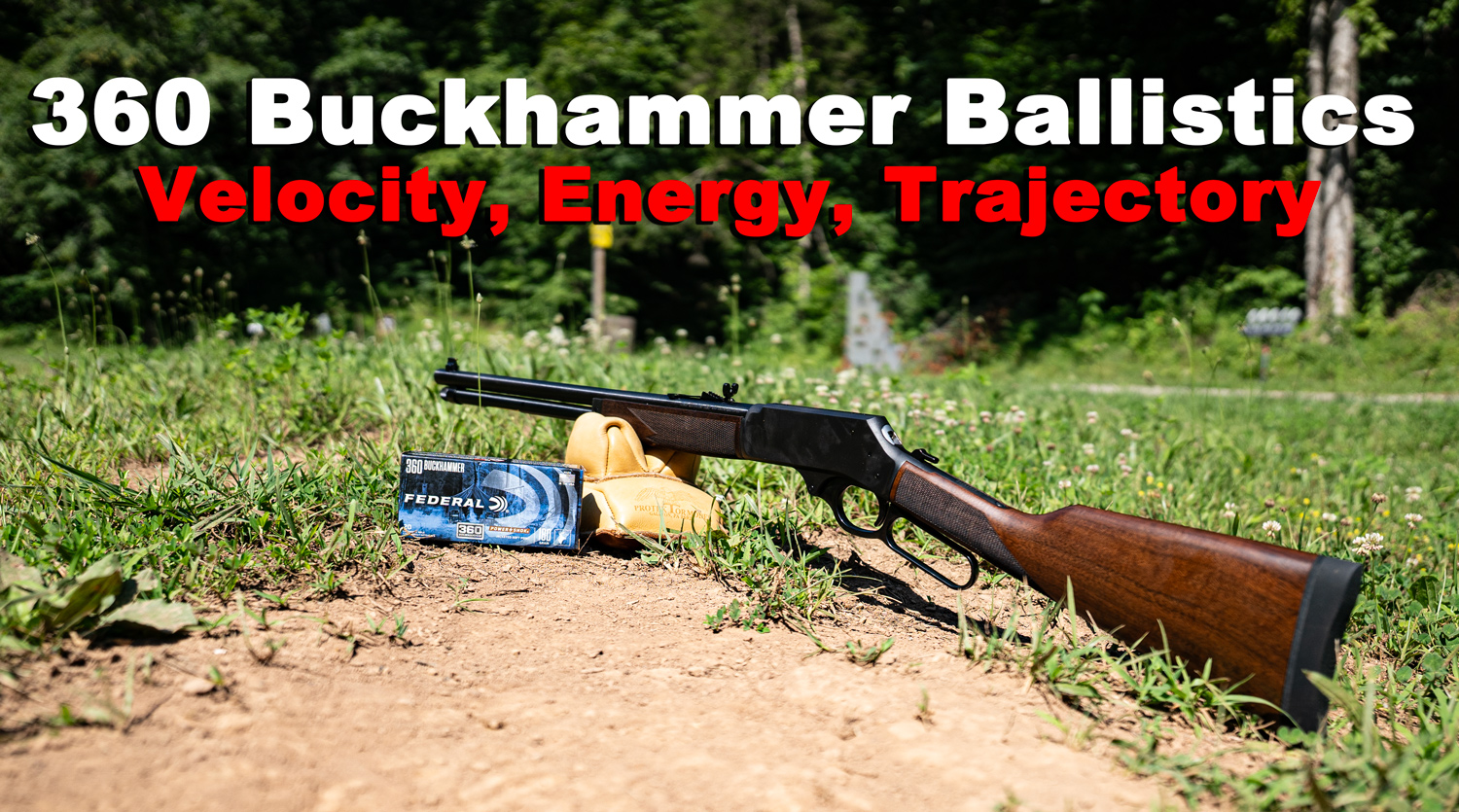
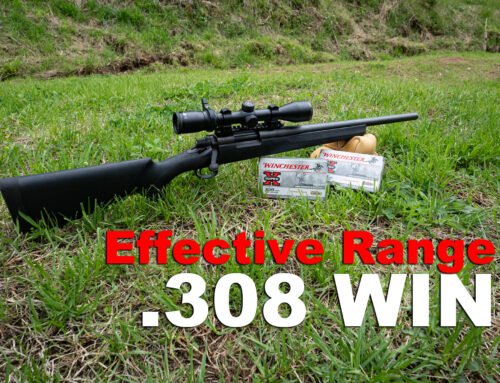
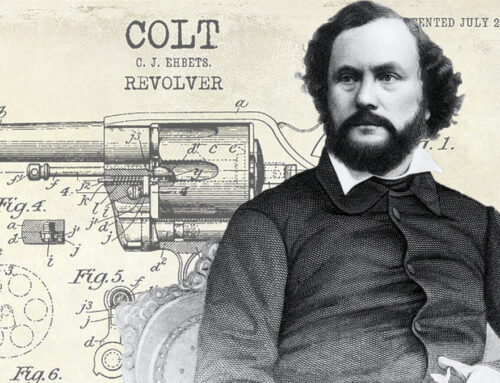

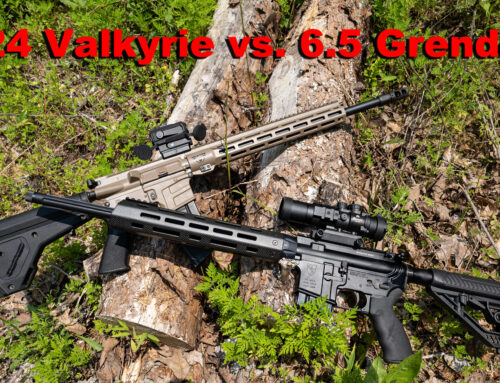
Leave A Comment